New Report: Turbid Water Stirs Up Future of Insecurity for Asia
Asia faces unprecedented water challenges, experts say, but solutions are within reach.
By Nadya Ivanova, Circle of Blue
Every morning, as the sun climbs up the Asian horizon, thousands of Indians come down to the shores of the Ganges River for a dip into its holy waters. Meanwhile, millions of Chinese along the Yellow River use its water for their daily survival. These “Mother” rivers, as the locals call them, once cradled ancient civilizations. But at the dawn of the 21st century, water threatens to trigger the hotspots of modern Asian society.
Asia faces “severe” water problems. According to a report released today by the Asia Society Leadership Group — Asia’s Next Challenge: Securing the Region’s Water Future — reduced access to fresh water supply will have a “profound impact on security throughout the region.” The combination of population increase, rising urbanization, rapid economic growth and climate change in Asian countries poses “unprecedented” challenges that will require governments to address multiple issues simultaneously and collaboratively, the report says.
Asia –- the biggest and most populous continent in the world — has less fresh water per capita than any other continent except for Antarctica. One out of five people in the region does not have access to a clean water supply, while half of the region’s population lacks access to basic sanitation. As Asia’s population is expected to explode by about 500 million people in the next 10 years, the stress on the continent’s resources will be even greater.
Jennifer Turner speaks about China’s water challenges. Interview by Aaron Jaffe; edited by Nadya Ivanova for Circle of Blue
“We are looking beyond the environmental implications,” said Suzanne DiMaggio, project director of the Leadership Group and director of the Asian Social Issues Program at the Asia Society. “We believe that there will be an increase in competition over water resources that could possibly lead to destabilization within countries, and even perhaps outright conflict between countries.”But water is more than an environmental issue, the report says. The combined effects of climate change and population pressure are likely to trigger a “cascading” set of negative consequences on food production, livelihood security, human migration, and economic and geopolitical stability.
According to DiMaggio, while water may not directly cause conflict, hotspots may flame up in areas already “fraught with tensions,” such as India and Pakistan, post-Soviet Central Asia and Afghanistan. But potential scenarios exceed traditional disputes.
“The conflicts of tomorrow might not be state-to-state military conflicts, but they could be growing disputes and tensions within countries that could lead to destabilization,” DiMaggio said. “The picture that emerges is one that we haven’t seen before, so we can’t rely on past experience [to solve it].”
“When the Yellow River is at Peace, China is at Peace”
The wisdom of Chinese mythology echoes from the past, as the Mother River struggles to nurture its child. Overuse and industrial and agricultural pollution muddy China’s waters, making the country –- together with Indonesia — a potential hub of what DiMaggio called “human-security” problems in villages and provinces.
“When you are interested in water in Asia, you need to look at China,” said Jennifer Turner, a contributing writer to the report and director of the China Environment Forum at the Woodrow Wilson International Center for Scholars. “And I mean China not only being the largest country, but that China’s economy is one that has buoyed the whole region as well as the globe.”
Water is the “biggest environmental issue” in the country, according to Turner. The exploding urban population is breaking its “peace” with the rivers, as urbanization rates are galloping at full pelt to promote economic development. About two-thirds of the cities in China are water-short at some point throughout the year, Turner said. At the same time, poor water quality and quantity in rural areas continue to impact fisheries and agriculture, which use about 80 percent of the water supply.
“Ultimately, when you look at so many of China’s environmental issues, and social and political issues, I can find a link, I can link it back to water,” Turner said.
An H2O Molecule With Many Bonds
While China may stand out in scale, it is hardly alone in facing Asia’s emerging water crisis. From existing or potential water disputes between neighboring countries such as India and Pakistan to the waterborne diseases choking Indonesia, as well as the melting of Asia’s glaciers, Asia’s future tugs dangerously at the region’s fragile web of interdependencies. The report — which debuted earlier this year before several Asian governments at the 5th World Water Forum in Istanbul — “calls attention” to the need for “regional” and “multidimensional” approaches to Asia’s increasing water challenges, DiMaggio said.
“No one country can address this problem individually,” she added. “Water doesn’t respect boundaries.” Transboundary water bodies — such as the Mekong, which flows through six countries in southeastern Asia — streak the geographical and political map of Asia, converting shared resources into shared challenges.
According to the Leadership Group, solutions are feasible; but the emerging crises can be headed off through high-level political will, better management as well as better investment.
“We really need to think more creatively and in a more forward-looking way to address these issues head on,” DiMaggio said, highlighting the report’s recommendation for a “broader” perspective that engages multiple public and private sectors.
“In our estimation, if we don’t deal with this crisis in a quick and practical way, it could turn out to be one of the major failures of the 21st century,” DiMaggio said.
Circle of Blue reporter/producer Aaron Jaffe contributed reporting from Chicago.
Inset image, a farmer pauses while tending his peach trees. Standing above a reservoir that’s been empty for the past four years, he hopes for rain near Near Chengdu, China. Photo by J. Carl Ganter for Circle of Blue.

, a Bulgaria native, is a Chicago-based reporter for Circle of Blue. She co-writes The Stream, a daily digest of international water news trends.
Interests: Europe, China, Environmental Policy, International Security.

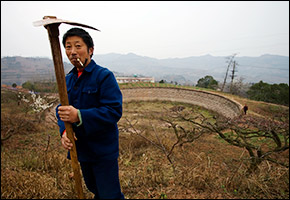

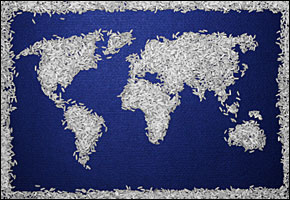

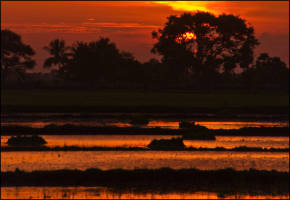


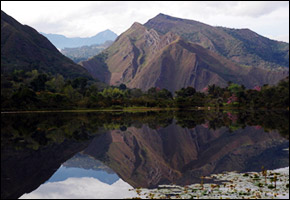
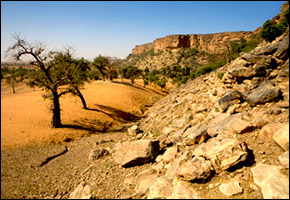
Leave a Reply
Want to join the discussion?Feel free to contribute!